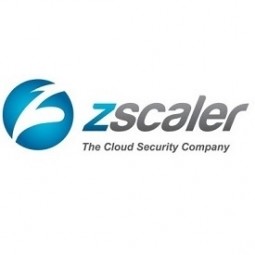Applicable Industries
- Buildings
- National Security & Defense
Use Cases
- Tamper Detection
About The Customer
NOV is a global provider of equipment that powers the oil industry. The company operates in 66 countries with 635 locations. When oil prices plummeted in 2014, the company was forced to cut back on its IT spending. This led to a need for cost-effective solutions to upgrade its outdated security appliances and maintain its legacy MPLS network. The company had already begun migrating to the cloud, adopting Microsoft Office 365 and moving internally managed applications to AWS and Azure. However, it faced challenges in establishing local internet breakouts at all its locations and ensuring fast, secure access to internal applications.
The Challenge
In 2014, the sharp decline in oil prices led to a significant reduction in IT spending at NOV, a global provider of equipment for the oil industry. The company's CIO and CISO, Alex Philips, was faced with the challenge of upgrading the company's outdated security appliances and maintaining its legacy MPLS network, both of which were financially untenable. The company had already begun its cloud migration by adopting Microsoft Office 365 and moving internally managed applications to AWS and Azure. However, the challenge was to establish local internet breakouts at its 635 locations in 66 countries, which was a complex and costly task. Additionally, the company needed to replace its risky and cumbersome VPN technology to ensure fast, secure access to internal applications.
The Solution
To address these challenges, Philips deployed Zscaler Internet Access™ to secure NOV’s new direct-to-cloud architecture. This provided an affordable alternative to replacing costly security appliances at every location. Zscaler offered complete security, including advanced threat protection, antivirus, sandboxing, and intrusion prevention systems. It also inspected SSL/TLS to secure against threats in encrypted traffic. To improve mobile workforce productivity and reduce the need to reimage infected endpoints, Zscaler was used. It also enabled rapid access to applications by peering with Microsoft Office 365. The solution simplified administration through a centralized management console, consolidated logins, and one rule set for all users.
Operational Impact
Quantitative Benefit

Case Study missing?
Start adding your own!
Register with your work email and create a new case study profile for your business.
Related Case Studies.

Case Study
Energy Saving & Power Monitoring System
Recently a university in Taiwan was experiencing dramatic power usage increases due to its growing number of campus buildings and students. Aiming to analyze their power consumption and increase their power efficiency across 52 buildings, the university wanted to build a power management system utilizing web-based hardware and software. With these goals in mind, they contacted Advantech to help them develop their system and provide them with the means to save energy in the years to come.

Case Study
Intelligent Building Automation System and Energy Saving Solution
One of the most difficult problems facing the world is conserving energy in buildings. However, it is not easy to have a cost-effective solution to reduce energy usage in a building. One solution for saving energy is to implement an intelligent building automation system (BAS) which can be controlled according to its schedule. In Indonesia a large university with a five floor building and 22 classrooms wanted to save the amount of energy being used.

Case Study
Powering Smart Home Automation solutions with IoT for Energy conservation
Many industry leaders that offer Smart Energy Management products & solutions face challenges including:How to build a scalable platform that can automatically scale-up to on-board ‘n’ number of Smart home devicesData security, solution availability, and reliability are the other critical factors to deal withHow to create a robust common IoT platform that handles any kind of smart devicesHow to enable data management capabilities that would help in intelligent decision-making

Case Study
Protecting a Stadium from Hazardous Materials Using IoT2cell's Mobility Platform
There was a need for higher security at the AT&T Stadium during the NFL draft. There was a need to ensure that nuclear radiation material was not smuggled inside the stadium. Hazmat materials could often be missed in a standard checkpoint when gaining entry into a stadium.

Case Study
Commercial Building Automation Boosts Energy Efficiency
One of the challenges to building automation is the multitude of non-interoperable communications protocols that have evolved over the years. Buildings have several islands of automation. Bridging the islands of different automation without losing the considerable investment in each specialized control network is the main focus in this solution.








